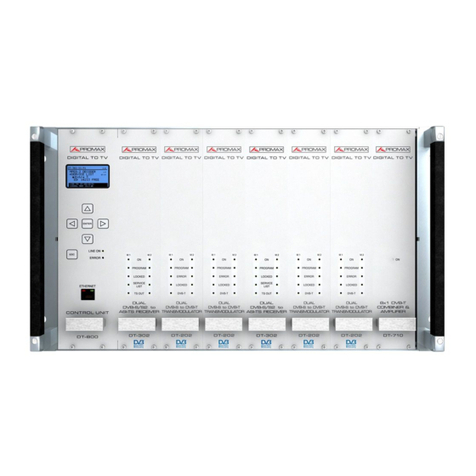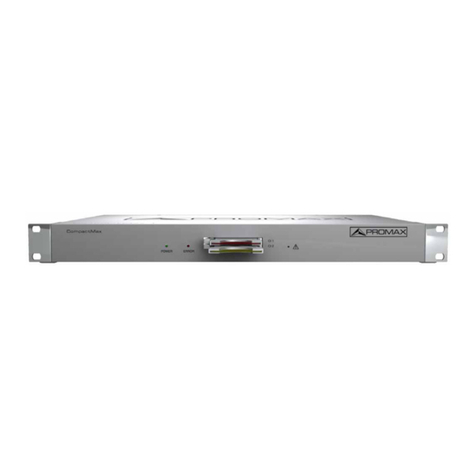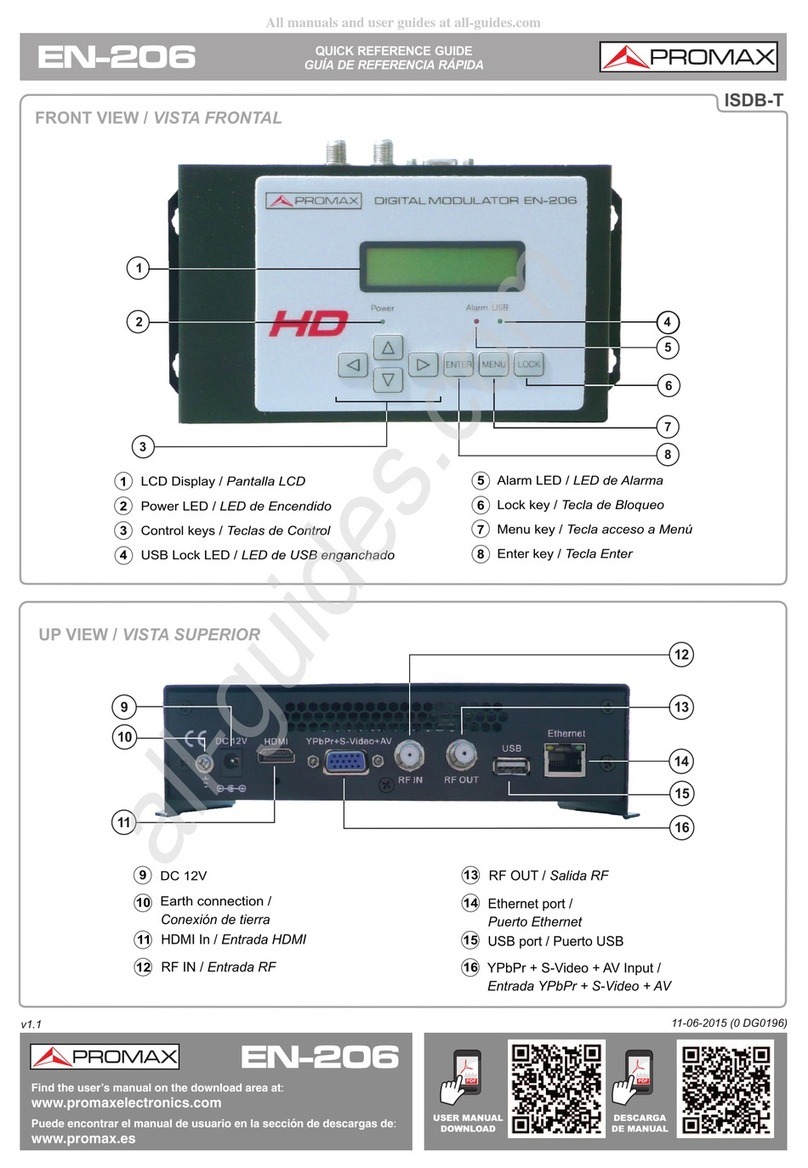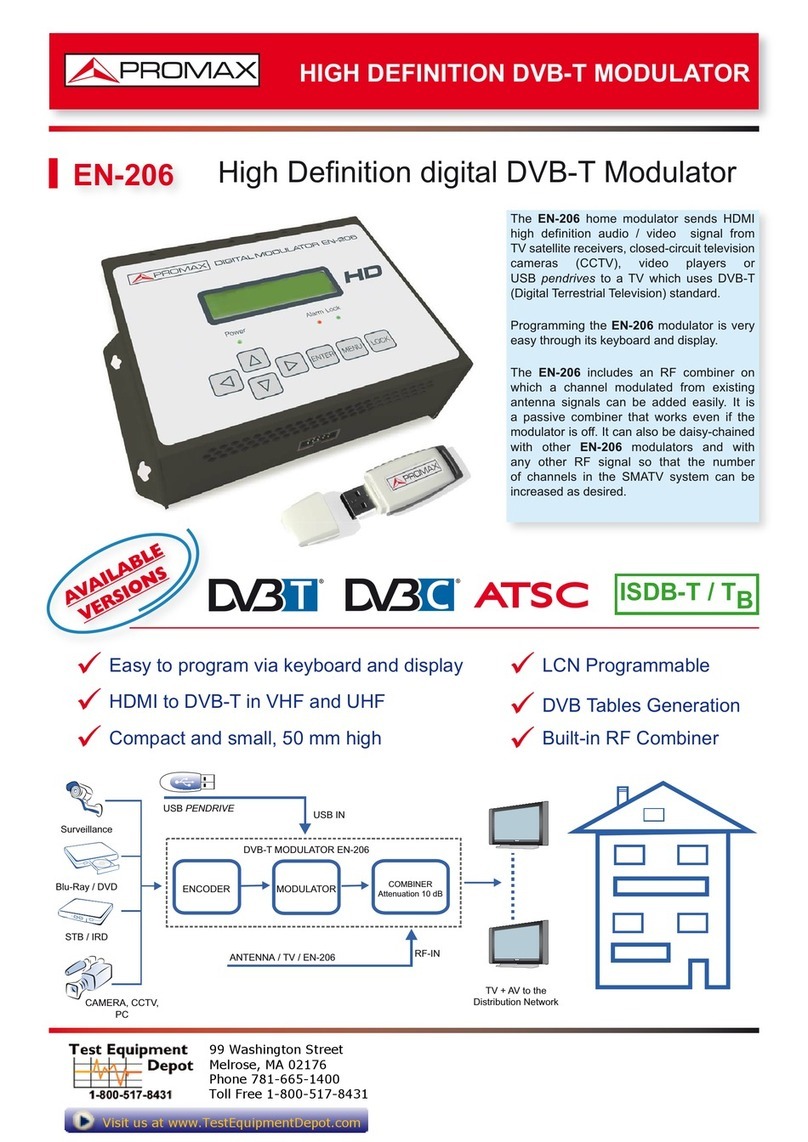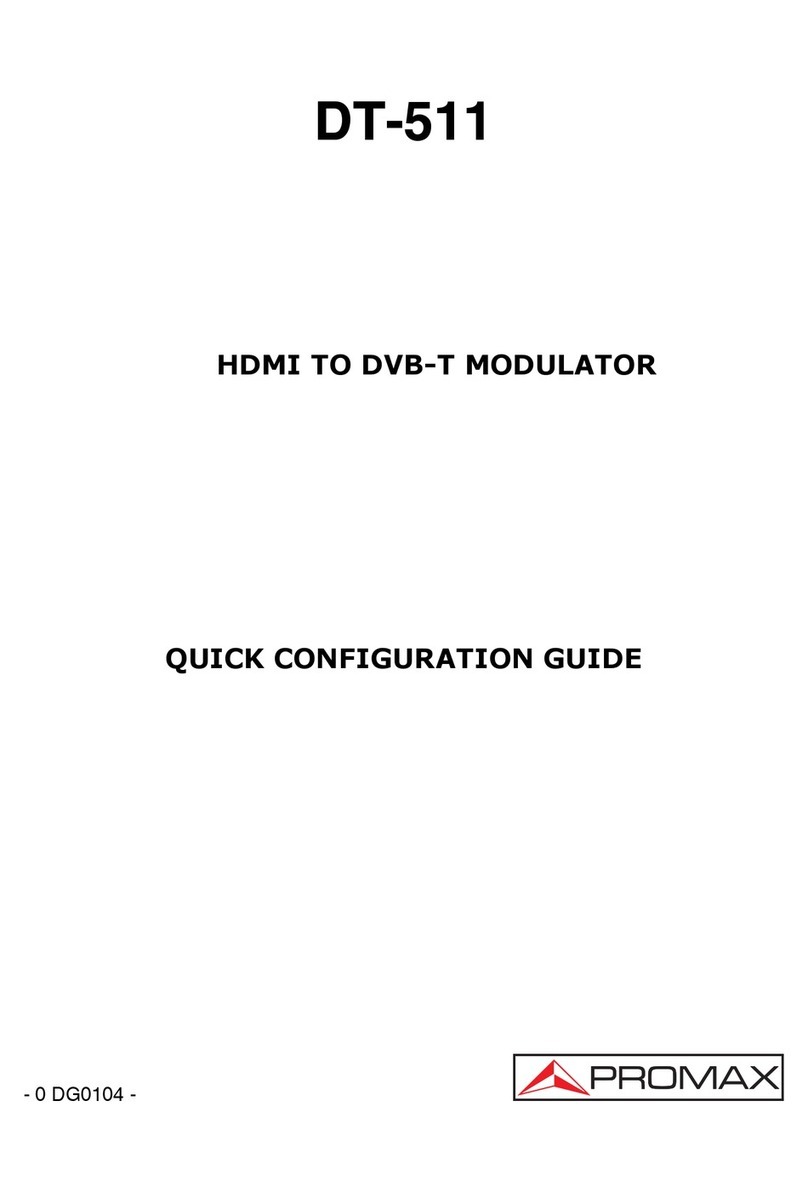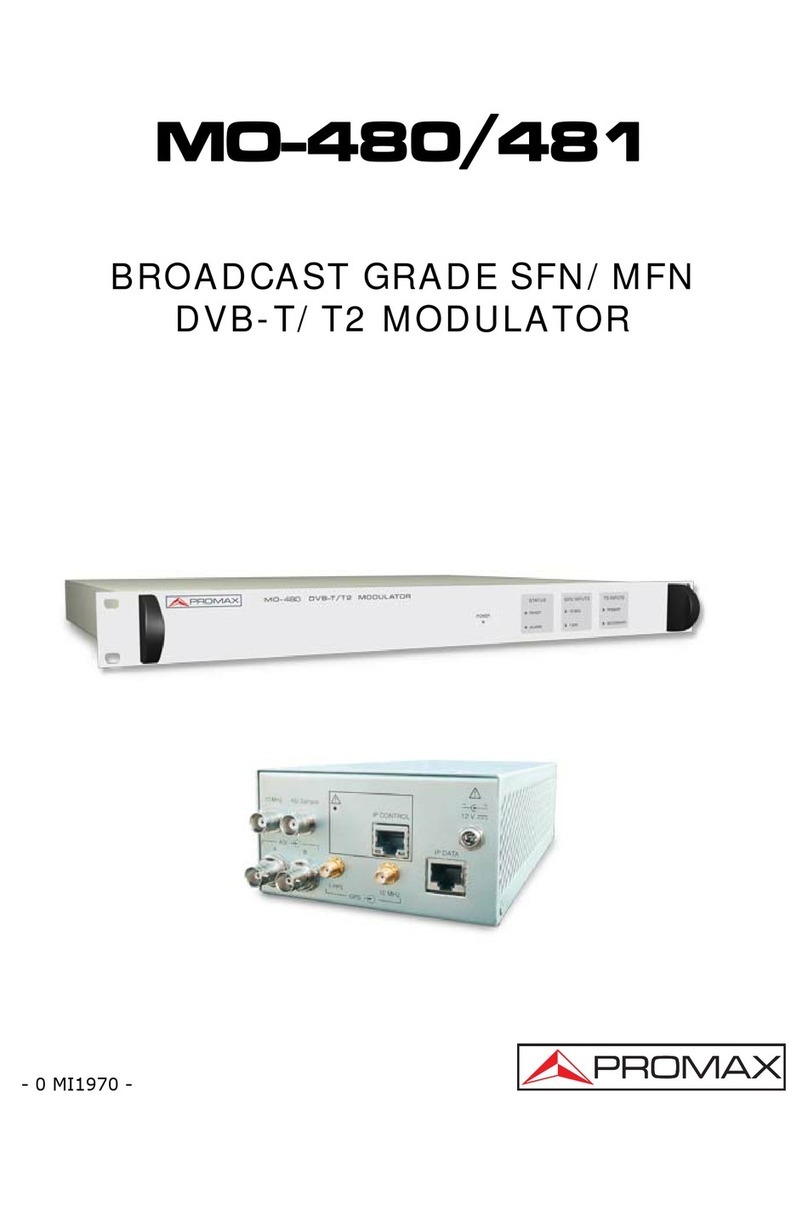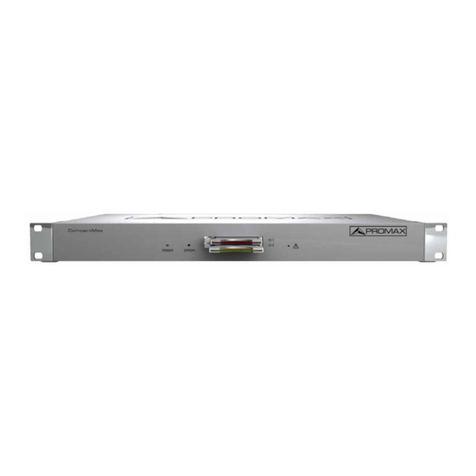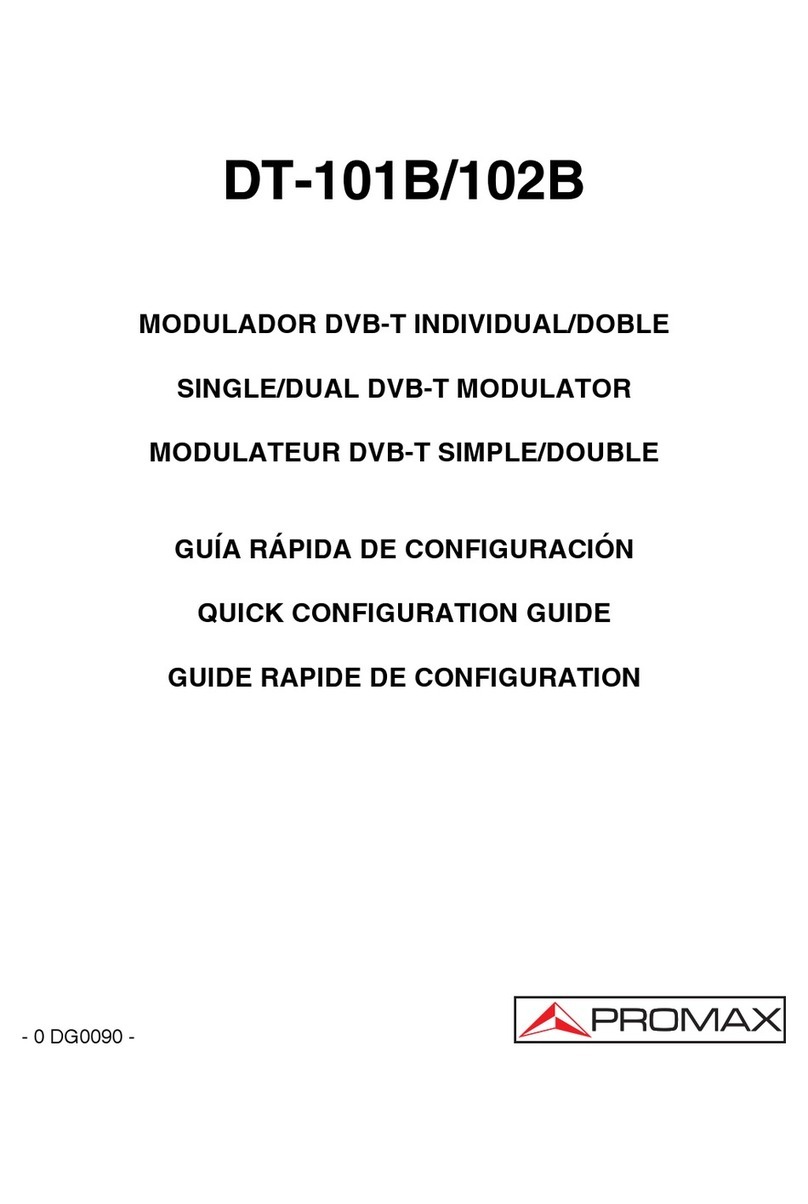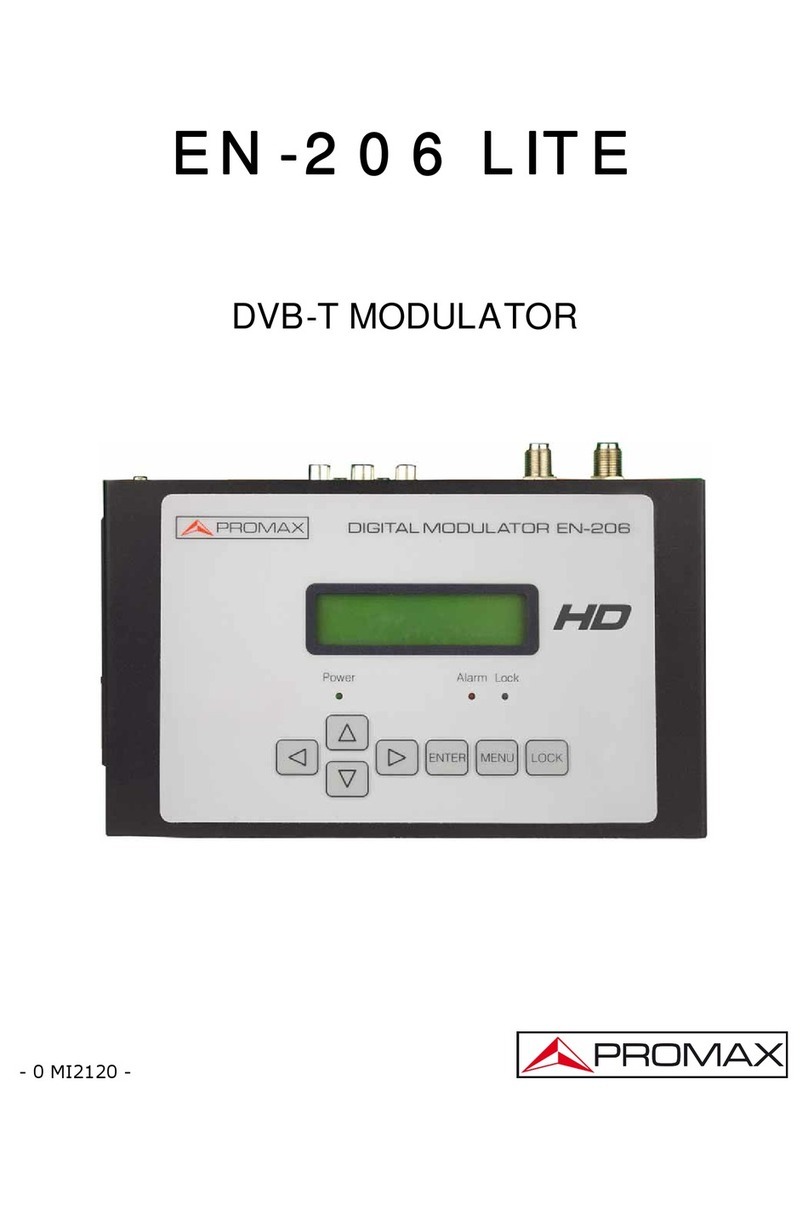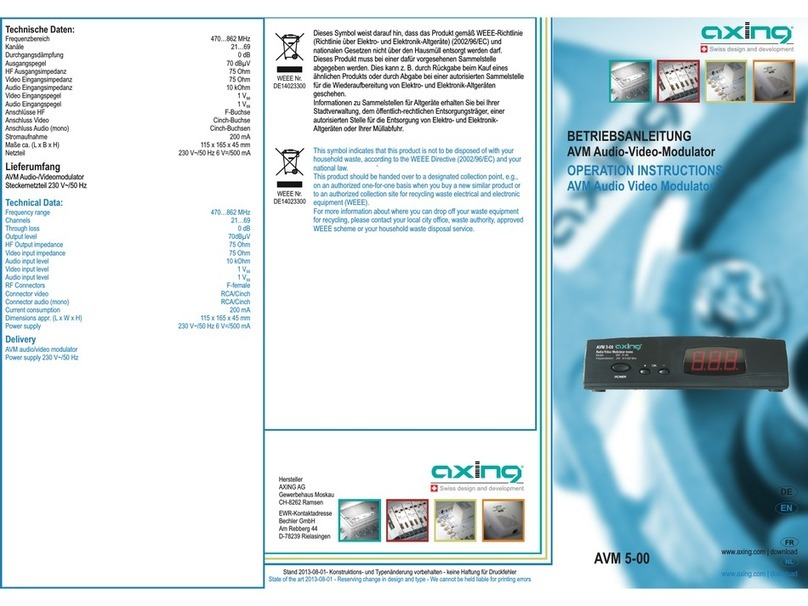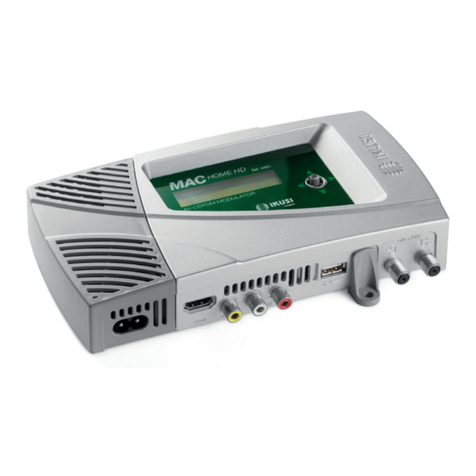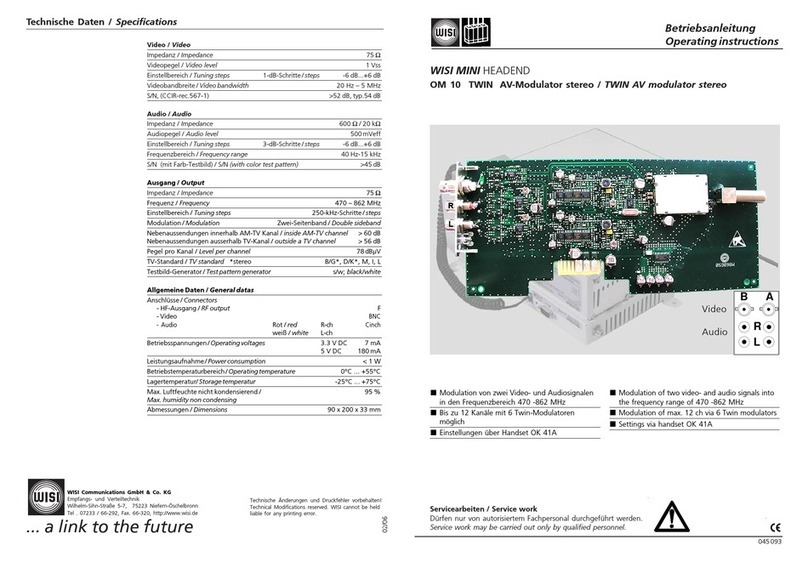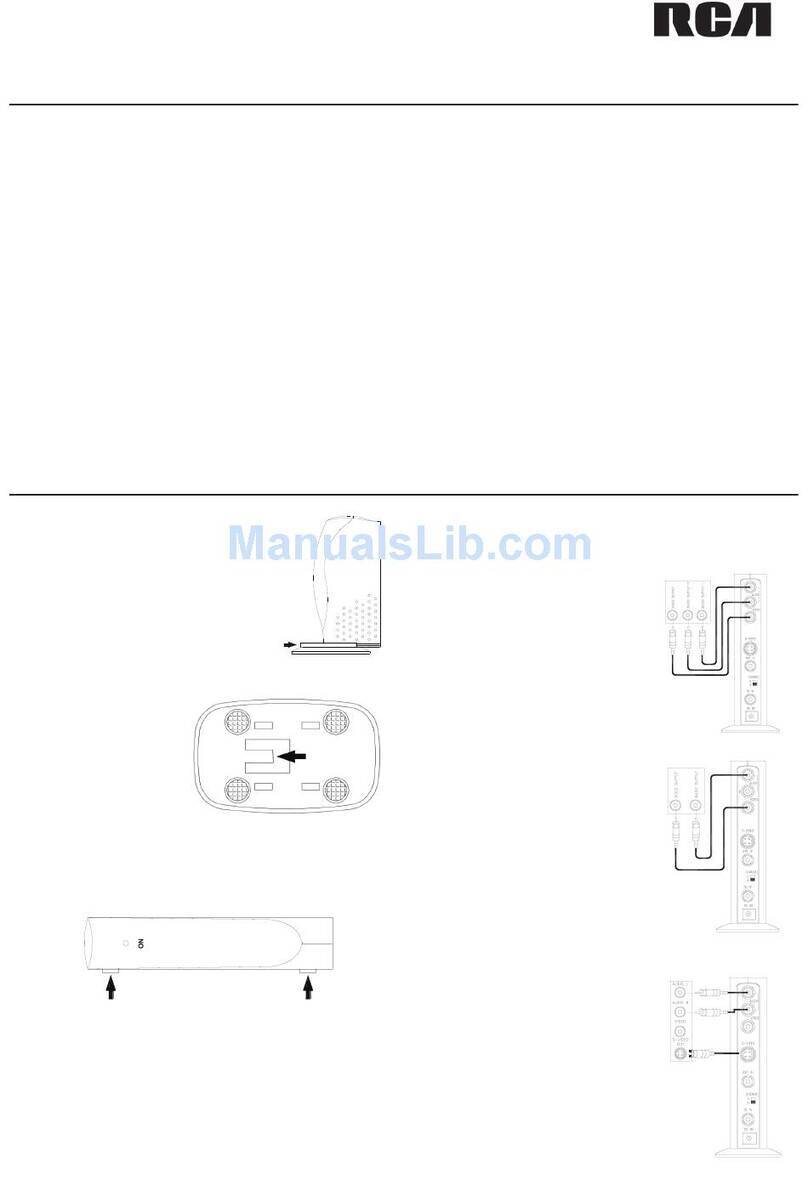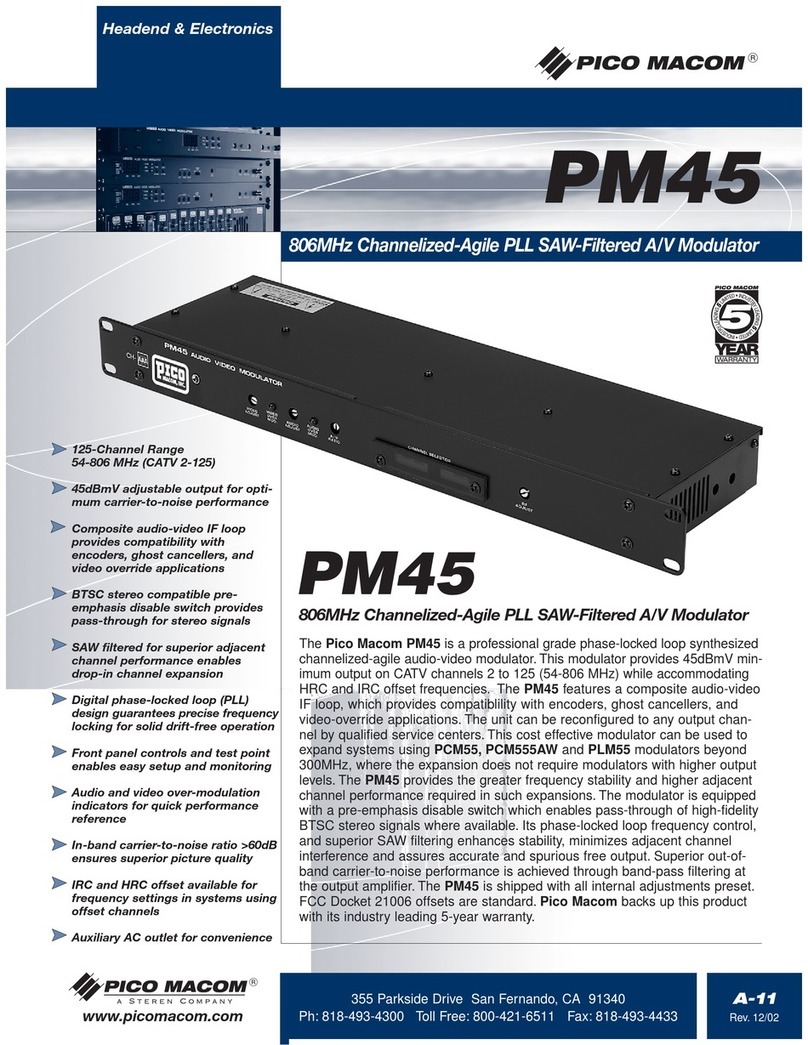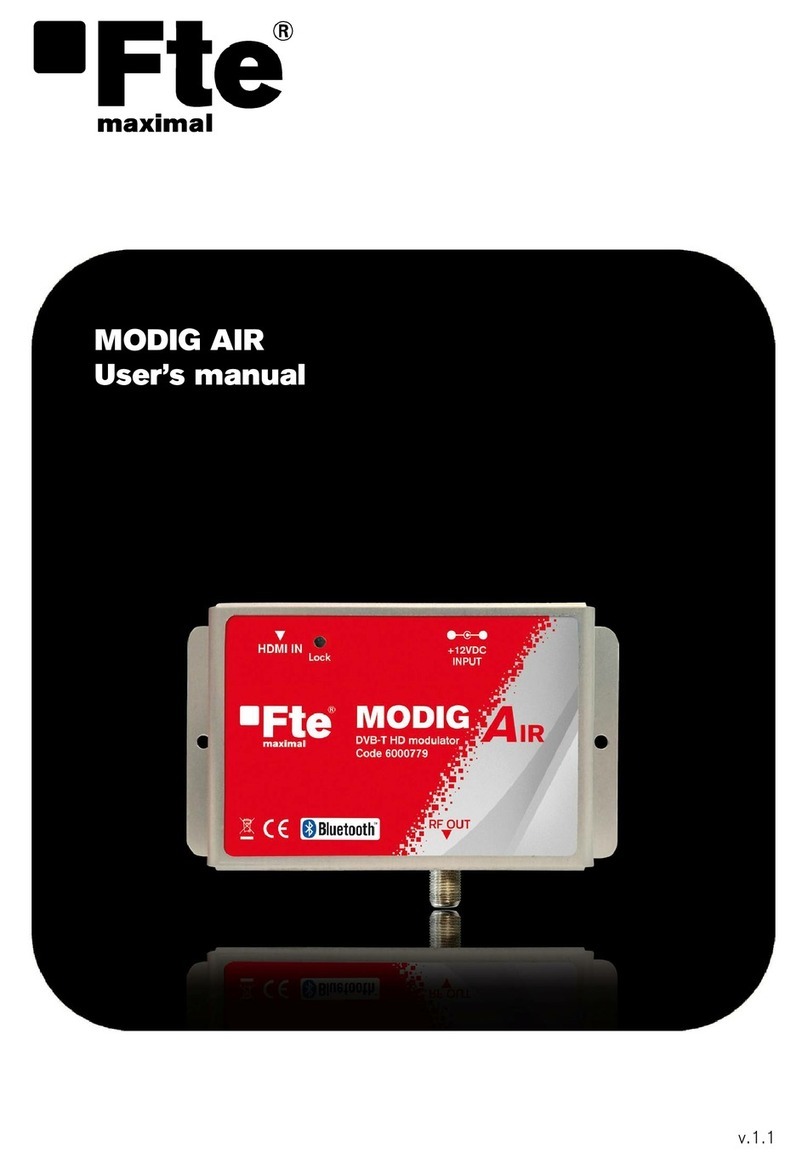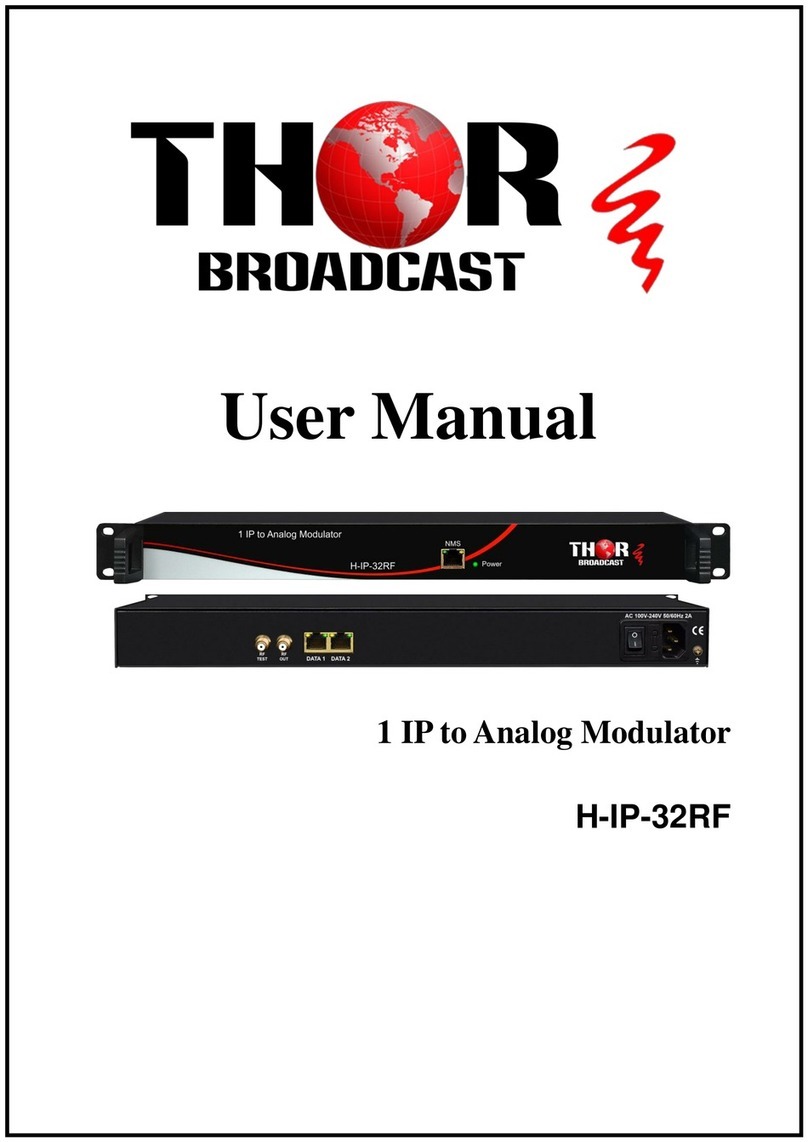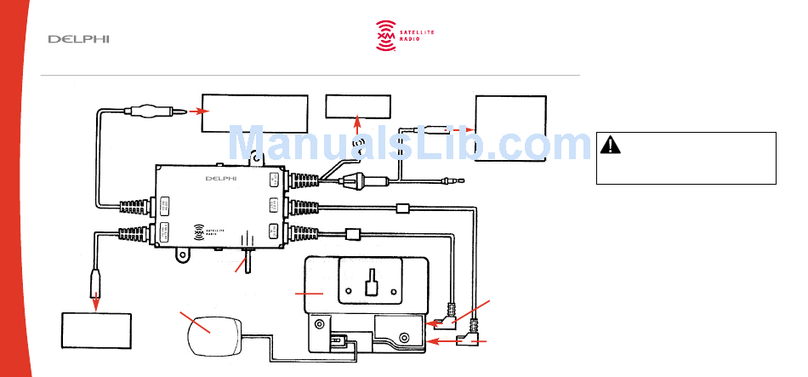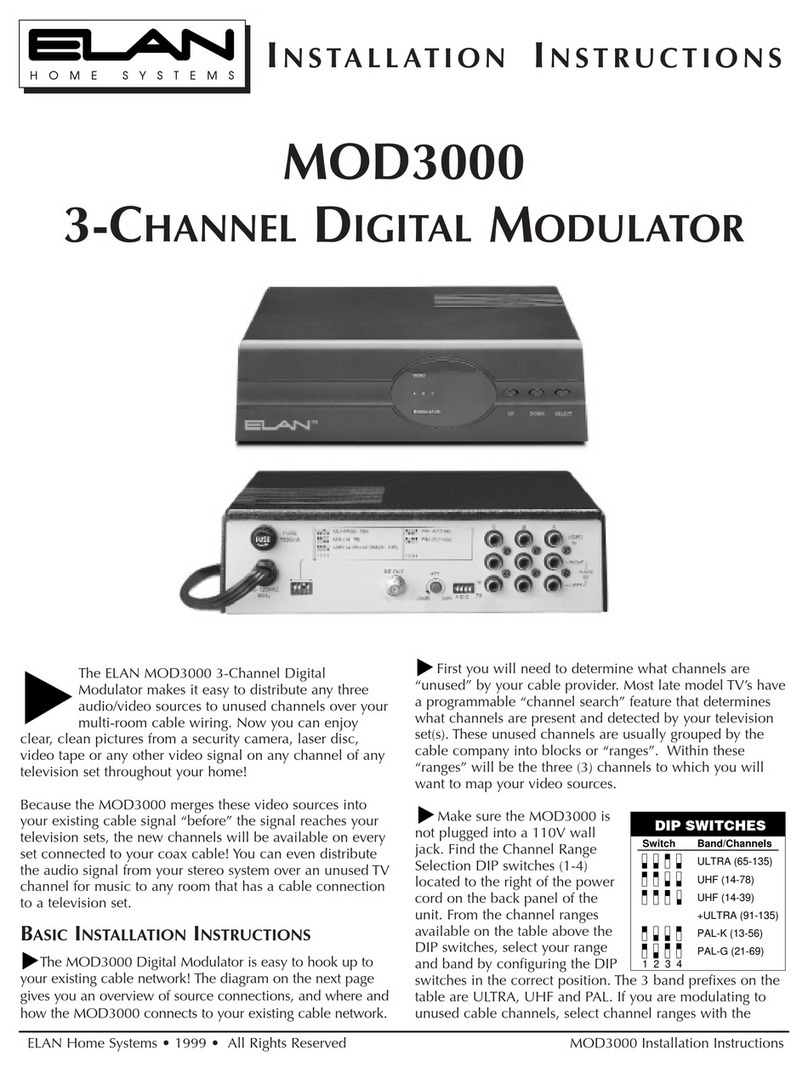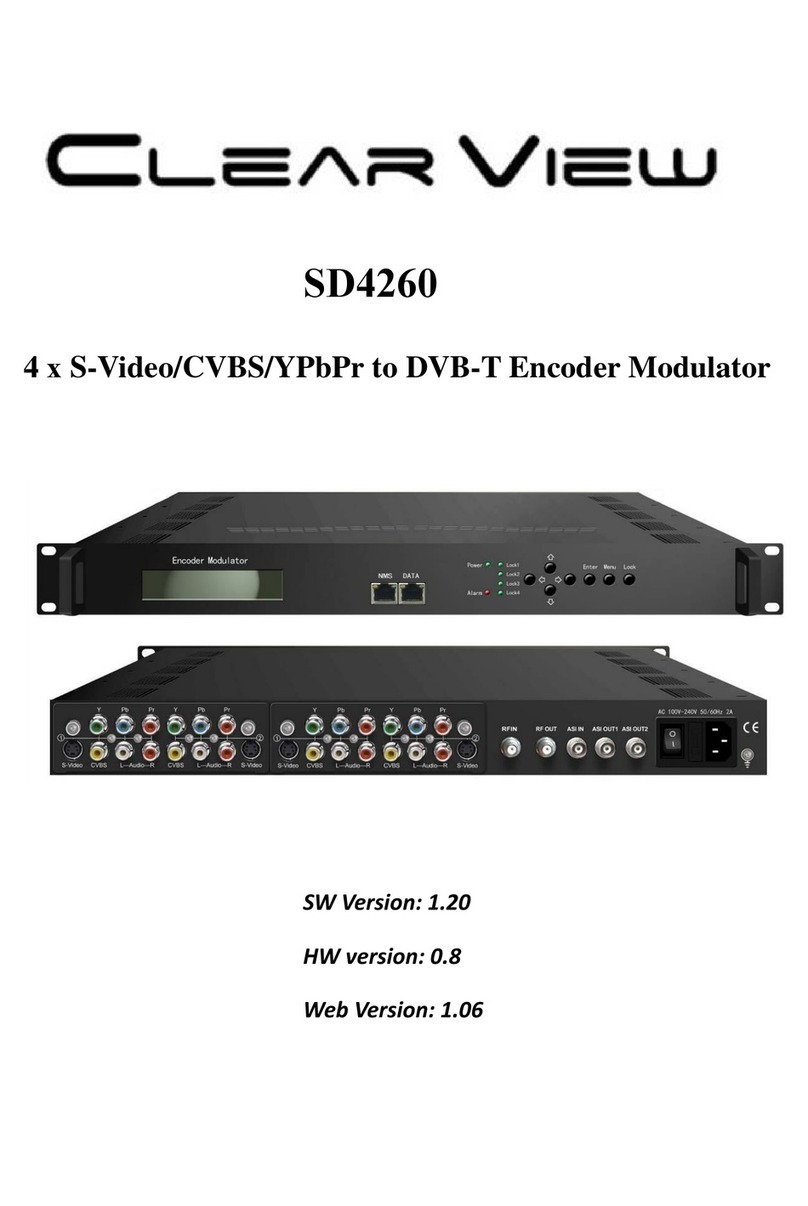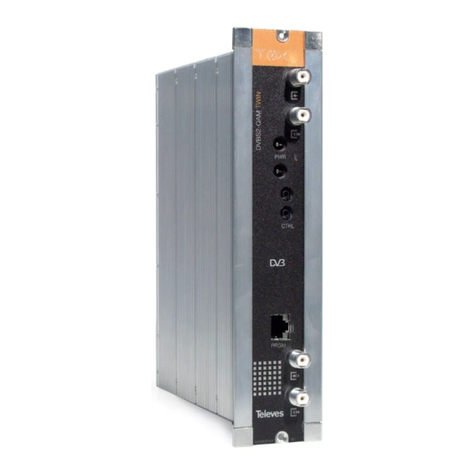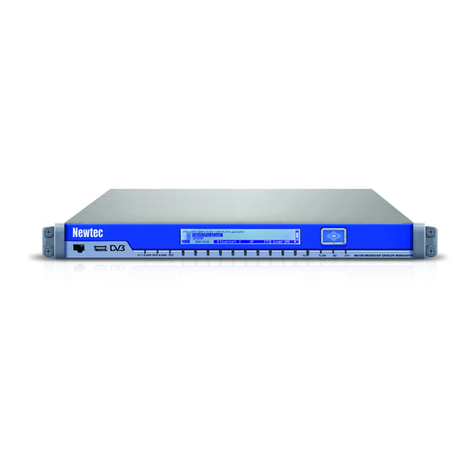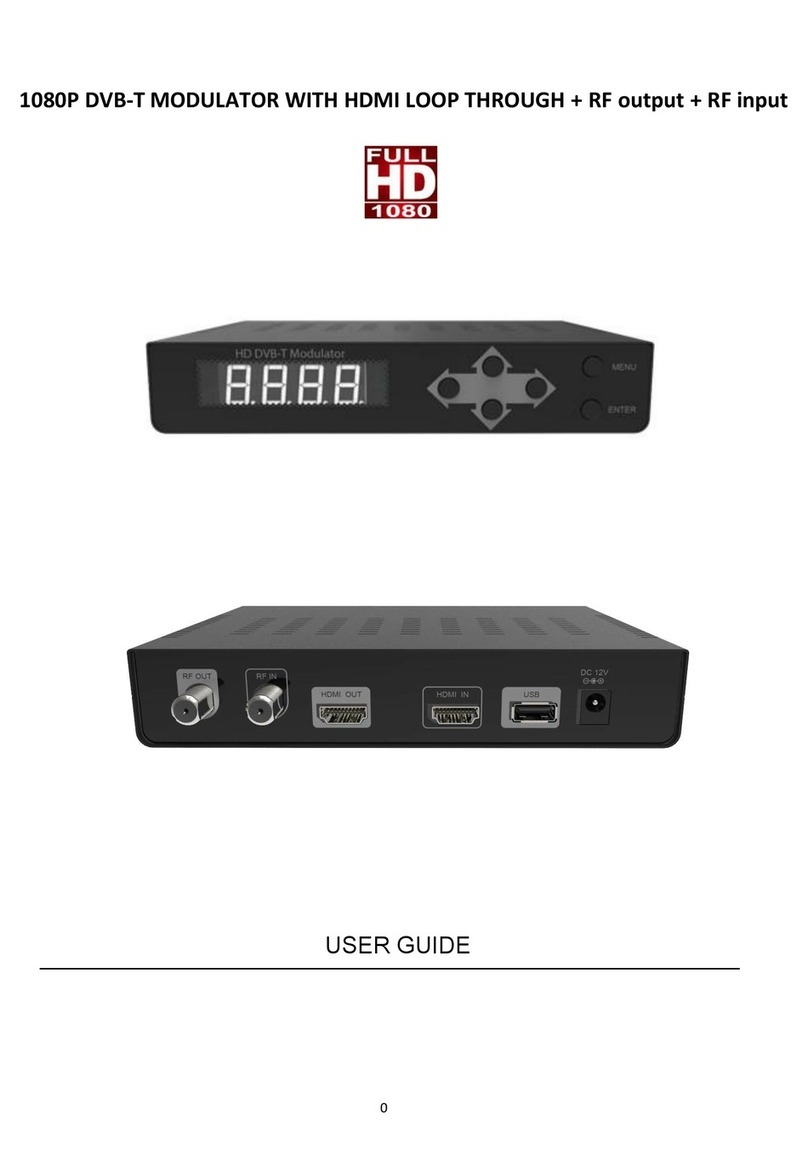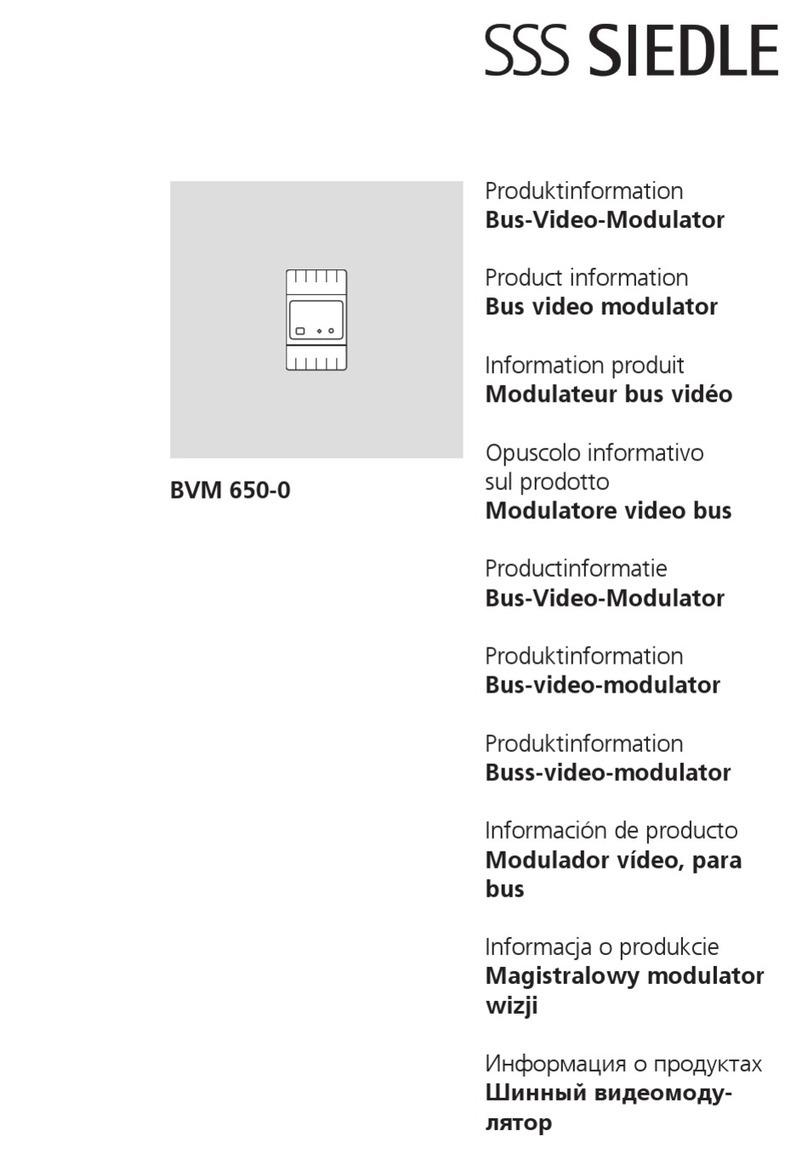
September 2013
SAFETY RULES
* The safety could not be assured if the instructions for use are not closely
followed.
* When using some of the following accessories use only the specified ones to
ensure safety.:
External DC charger
Power cord
* No use the external DC power cord this is damaged.
* Do not connect the external DC power until all cables are connected properly.
* In el manipulate external DC power supply.
* Observe all specified ratings both of supply and measurement.
* Remember that voltages higher than 70 V DC or 33 V AC rms are dangerous.
* Use this instrument under the specified environmental conditions.
* If the encoder modulator has been kept in cold conditions for a long time, keep it in
a warm room minimum 2 hours before plugging into the mains.
* Mount the device in vertical position with the connectors located on the top side.
* Do not obstruct the ventilation system of the instrument.
* To prevent fire or shock hazard, do not expose this appliance to rain or moisture.
* Use for the signal inputs/outputs, appropriate low radiation cables.
* Follow the cleaning instructions described in the Maintenance paragraph.
* The operator is not allowed to intervene within the team: Any other change on the
equipment should be carried out by qualified personnel.
* Mechanical handling / electric unit can cause damage. Do not connect the appliance
to the mains before or during assembly.
